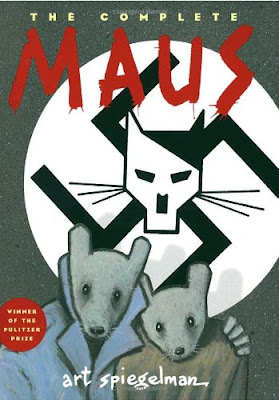1.
For being a novel about superheroes, Civil War
is drawn in a very realistic way. All of the characters and backgrounds are
drawn with a large amount of detail, and even the characters that are of
mutant/alien nature look believable. Even the fight scenes are realistically
detailed, with injuries remaining consistant from panel to panel, as well as
rips and tears to character clothing. Overall, this has to be the most
realistically drawn superhero novel I have read.
2.
I don't believe this story would work in any
other format for the simple fact that there is just too much going on in many
of the frames. Without the ability to take your time and look at each
individual frame, an enormous number of detailes would be lost. Not to mention
how difficult it would be to cast so many different superheroes and villains.
And as far as translating it to a purely written format: I wouldn't even want
to begin describing a battle between 30+ superheroes with words alone. It would
be nearly impossible to keep track of!
3.
There is no real narrator for this story.
Different scenes focus on different characters, and while some are featured
more prominently than others, you never get to see what the characters are
thinking, only what they say out loud. The only exceptions to this are the
notes left by Susan Richards and Reed Richards to each other at different
points in the story, where they each narrate their inner thoughts and feelings
about the conflict that is occuring. For a story with so many different
characters and so many different viewpoints on the central topics, this is a
very interesting narrative style that allows the reader to always be in the
know while never quite knowing what is going to happen next.
4.
To me, the most significant scene is where Thor
kills Goliath, causing Susan Richards to betray her comrades in order to help
the rebels escape. This scene greatly emphasizes the central moral conflict the
characters face throughout the novel: Just how far are they willing to go to
fight for what they believe is right, and if it causes others to die, is it
really right in the first place? Artistically the scene is very cinematic, with
rain pouring down as Dagger, Cage, and Daredevil watch in shock and horror as
Goliath slowly falls to the ground. This scene also occurs almost in the center
of the novel, which I think is fitting since it completely changes the way many
of the characters view the conflict.



















.jpg)